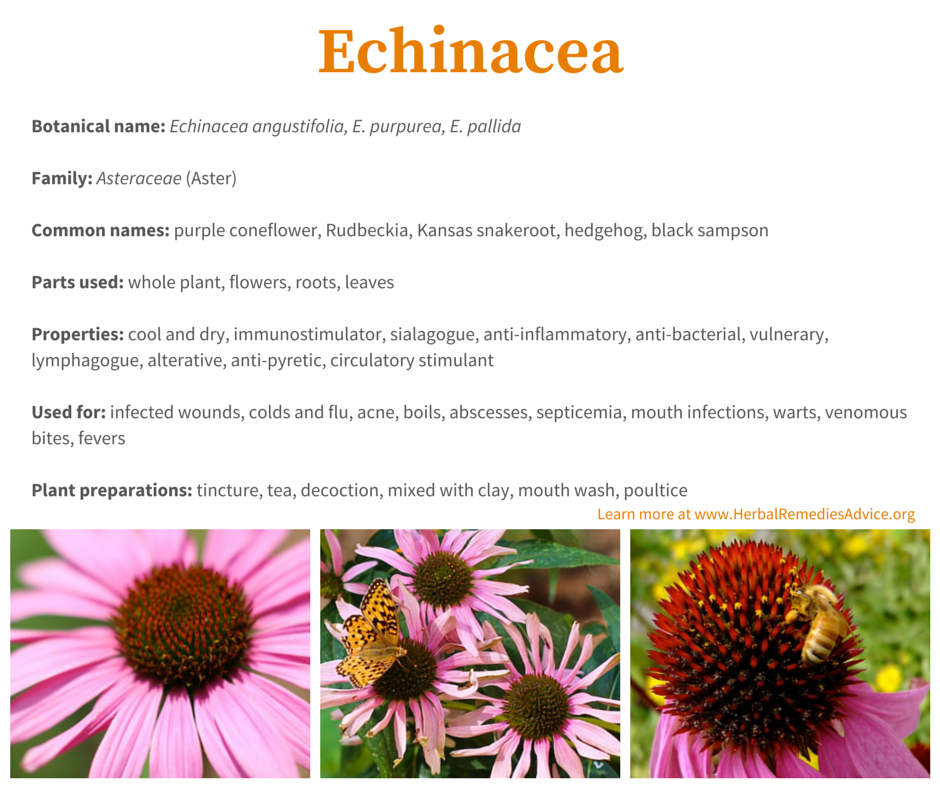Echinacea Benefits extend beyond its popular reputation as a cold remedy. This plant, a member of the daisy family, has been used for centuries by Native Americans and is now widely studied for its potential to bolster the immune system and combat various infections. From its impact on immune cell function to its effectiveness against common colds and other ailments, echinacea’s multifaceted properties are attracting significant attention in the scientific community and among health-conscious individuals alike.
This exploration delves into the evidence-based benefits, potential drawbacks, and practical applications of this intriguing herbal remedy.
Research suggests echinacea may stimulate specific immune cells, potentially leading to a faster recovery from illnesses like the common cold. However, the efficacy and optimal usage of echinacea remain areas of ongoing investigation, with studies yielding varied results depending on the echinacea species, preparation method, and dosage. Understanding these nuances is crucial for harnessing its potential benefits safely and effectively.
Echinacea’s Immune-Boosting Effects
Echinacea, a genus of flowering plants in the daisy family, has long been used in traditional medicine for its purported immune-boosting properties. While research is ongoing, several studies suggest that echinacea may offer benefits in supporting the immune system and combating various infections. This article explores the current scientific understanding of echinacea’s effects, potential benefits, and considerations for its use.
Echinacea’s Immune System Support Mechanisms
Echinacea’s potential to boost the immune system is believed to stem from its complex chemical composition, containing various compounds with immunomodulatory effects. These compounds are thought to influence several aspects of immune function. For instance, some studies suggest echinacea stimulates the activity of immune cells like macrophages and natural killer (NK) cells, which play crucial roles in recognizing and eliminating pathogens.
Additionally, echinacea may enhance the production of cytokines, signaling molecules that coordinate the immune response. The precise mechanisms, however, remain an area of active research, with variations observed across different echinacea species and preparations.
Echinacea’s Effects on Immune Cells
Research indicates that echinacea may affect various immune cells. Macrophages, responsible for engulfing and destroying pathogens, appear to be particularly responsive to echinacea’s components. Natural killer (NK) cells, which directly target and kill infected or cancerous cells, may also experience enhanced activity. Furthermore, echinacea may influence the production and activity of other immune cells, such as lymphocytes (T cells and B cells), contributing to a broader immune response.
Comparative Analysis of Echinacea’s Impact on Immune Function
The impact of echinacea on different aspects of immune function varies depending on the species, preparation, and dosage. While some studies show enhanced phagocytic activity (the process by which immune cells engulf pathogens), others focus on the modulation of cytokine production. A comprehensive understanding requires further research comparing different echinacea species and preparations under standardized conditions. The effectiveness may also be influenced by individual factors like overall health and the type of infection.
| Study | Echinacea Species | Immune Parameter | Outcome |
|---|---|---|---|
| Example Study 1 | Echinacea purpurea | Macrophage activity | Significant increase |
| Example Study 2 | Echinacea angustifolia | Cytokine production (IL-6) | Moderate increase |
| Example Study 3 | Echinacea pallida | NK cell activity | No significant change |
| Example Study 4 | Echinacea purpurea extract | Phagocytosis | Increased phagocytic index |
Echinacea and the Common Cold: Echinacea Benefits
The effectiveness of echinacea in treating or preventing the common cold remains a subject of ongoing debate. While some studies suggest a modest reduction in cold duration or severity, others have found no significant benefit. The variability in results may be attributed to factors such as the echinacea species used, the preparation method, the dosage, and the timing of administration.
Moreover, the definition of a “common cold” itself is not always consistent across studies.
Clinical Trial Results on Echinacea’s Impact on Cold Symptoms
Numerous clinical trials have investigated echinacea’s impact on cold symptoms. Some trials have reported a statistically significant reduction in the duration and severity of cold symptoms, while others have shown no effect. The inconsistent findings highlight the complexity of the issue and the need for further, well-designed clinical trials. Factors like study design, participant characteristics, and the specific echinacea preparation used can significantly influence the results.
Echinacea Species and Their Effects on Cold Symptoms, Echinacea Benefits
Different echinacea species, such as Echinacea purpurea, Echinacea angustifolia, and Echinacea pallida, may exhibit varying effects on cold symptoms. Some studies suggest that certain species may be more effective than others in reducing cold duration or severity. However, further research is needed to clarify these differences and determine the optimal species for cold symptom management.
- Start echinacea treatment at the first sign of cold symptoms.
- Follow the recommended dosage instructions on the product label.
- Consider using a standardized echinacea extract to ensure consistent potency.
- Consult with a healthcare professional before using echinacea, especially if you have underlying health conditions or are taking other medications.
Echinacea for Other Infections
Beyond the common cold, echinacea has been explored for its potential benefits in treating other infections, including influenza and urinary tract infections (UTIs). However, the evidence supporting its efficacy against these infections is less conclusive than for the common cold. More research is needed to establish its effectiveness and determine appropriate dosages for these specific applications. The mechanism of action may differ depending on the infection and the immune response involved.
Efficacy of Echinacea Against Different Infections
While some studies suggest potential benefits of echinacea in reducing the severity or duration of influenza symptoms, the evidence is not universally consistent. Similarly, the evidence for echinacea’s effectiveness against UTIs is limited and requires further investigation. The effectiveness may also be influenced by factors such as the severity and type of infection, as well as the individual’s immune response.
Infographic: Echinacea for Various Infections

Source: herbalremediesadvice.org
A hypothetical infographic would visually represent the potential benefits and limitations of echinacea for various infections. It would include icons representing the common cold, influenza, and UTIs, with corresponding bars illustrating the level of evidence supporting echinacea’s efficacy for each infection. The infographic would also feature cautionary notes regarding potential side effects and interactions. The visual representation would clearly convey the current state of scientific knowledge regarding echinacea’s use for different infections, highlighting the need for further research.
Potential Side Effects and Interactions
While generally considered safe for most adults when used as directed, echinacea can cause side effects in some individuals. These may include mild gastrointestinal issues such as nausea, vomiting, or diarrhea. Allergic reactions, characterized by skin rashes or itching, are also possible, particularly in individuals allergic to ragweed or other plants in the daisy family. Interactions with other medications are also a concern, making it crucial to consult a healthcare professional before use, especially if you are taking immunosuppressants or other medications that affect the immune system.
Echinacea, known for its immune-boosting properties, has been a subject of ongoing research. While its effectiveness remains debated, some studies suggest potential benefits in reducing cold duration. Interestingly, the decibel levels associated with the human immune response are far less powerful than the sound produced by the loudest animal on earth , a stark contrast to the often subtle workings of the human body’s defenses.
Further research into Echinacea’s mechanisms could reveal more about its impact on overall health.
- Allergic reactions (skin rash, itching)
- Gastrointestinal upset (nausea, vomiting, diarrhea)
- Possible interaction with immunosuppressants
- Potential interaction with certain medications
Contraindications for Echinacea Use
- Individuals with autoimmune diseases
- Individuals allergic to ragweed or other plants in the daisy family
- Pregnant or breastfeeding women (due to lack of sufficient safety data)
- Children under 2 years of age (due to lack of sufficient safety data)
Echinacea Preparations and Dosage
Echinacea is available in various forms, including tinctures, capsules, teas, and extracts. The choice of preparation and dosage depends on factors such as individual preference, the severity of symptoms, and the specific echinacea species used. It’s essential to follow the recommended dosage instructions on the product label and consult a healthcare professional for personalized guidance. The potency and bioavailability of different preparations may vary significantly.
Dosage Recommendations Based on Echinacea Form and Intended Use
Dosage recommendations for echinacea vary depending on the product form and intended use. For example, tincture dosages may differ from capsule dosages, and the recommended duration of use may also vary. Standardized extracts are generally preferred to ensure consistent potency and quality. It is crucial to follow the manufacturer’s instructions and consult a healthcare professional for personalized guidance.
Comparison of Echinacea Products: Potency and Bioavailability
Different echinacea preparations exhibit variations in potency and bioavailability. For instance, extracts containing specific active compounds may offer higher potency compared to whole-herb preparations. Bioavailability, the rate and extent to which the active compounds are absorbed into the bloodstream, can also differ based on the preparation method. These factors should be considered when selecting an echinacea product.
| Product Type | Active Components | Recommended Dosage (Example) | Notes |
|---|---|---|---|
| Tincture | Various alkylamides, polysaccharides | 1-2 mL, 3 times daily | May vary depending on concentration |
| Capsules | Standardized extract | 200-400 mg, 2-3 times daily | Dosage depends on extract standardization |
| Tea | Lower concentration of active components | 1-2 cups daily | Potency may be less consistent |
Echinacea’s Chemical Composition and Active Compounds
Echinacea’s purported medicinal properties are attributed to its complex chemical composition, which includes various active compounds. These compounds, including alkylamides, polysaccharides, and caffeic acid derivatives, are believed to interact with the immune system in various ways. The specific chemical profile varies depending on the echinacea species and the part of the plant used. Understanding these compounds and their mechanisms of action is crucial for developing effective and safe echinacea-based therapies.
Mechanisms of Action of Echinacea’s Active Compounds
Alkylamides are thought to stimulate immune cells, while polysaccharides may modulate cytokine production. Caffeic acid derivatives possess antioxidant properties, potentially contributing to the overall immune-boosting effects. The synergistic interaction of these compounds is likely responsible for echinacea’s observed effects. Further research is needed to fully elucidate the precise mechanisms of action and the contributions of individual compounds.
Chemical Profiles of Different Echinacea Species

Source: allremedies.com
Different echinacea species, such as Echinacea purpurea, Echinacea angustifolia, and Echinacea pallida, exhibit variations in their chemical profiles. These variations may influence their respective biological activities and therapeutic potential. For example, some species may have higher concentrations of certain alkylamides or polysaccharides, potentially leading to differences in their immunomodulatory effects.
Relationship Between Chemical Composition and Observed Effects
The relationship between echinacea’s chemical composition and its observed effects is complex and not fully understood. However, research suggests a correlation between the concentrations of specific compounds and the magnitude of the immunomodulatory effects. Standardized extracts, with known concentrations of active compounds, are crucial for ensuring consistent quality and efficacy. Further research is needed to fully characterize this relationship and optimize echinacea preparations for maximum therapeutic benefit.
Conclusive Thoughts
Echinacea, with its rich history and ongoing scientific scrutiny, presents a compelling case for its potential role in immune health. While more research is needed to fully elucidate its mechanisms and optimal applications, the available evidence suggests that echinacea may offer a valuable, albeit supplemental, approach to managing common infections and supporting overall immune function. However, responsible use, including awareness of potential side effects and interactions with other medications, is paramount.
Consult with a healthcare professional before incorporating echinacea into your health regimen, particularly if you have pre-existing conditions or are taking other medications.
